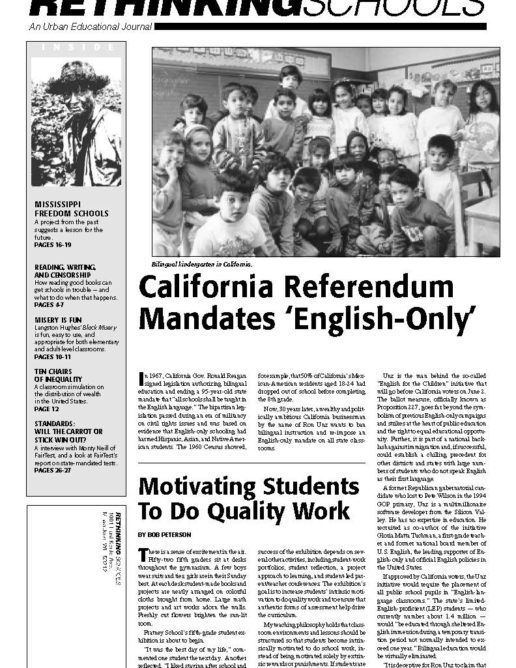Preview of Article:
Neighborhood Schools, Busing, and the Struggle for Equality
Given the way Milwaukee chose to implement desegregation, over the years the cost of busing has skyrocketed. The total for 1997 was over $53 million, 7.6% of MPS’s budget. Nearly all of this money comes from the state.
No MPS students, nor many of their parents and teachers, were even alive when the first busing controversy rolled into town some 40 years ago. The controversy — rooted in Milwaukee’s segregated housing patterns — began when the school district used busing to alleviate overcrowding in schools but confined Black students to certain schools.
Overcrowding started in the 1950s and 1960s as the district faced population pressures both in the central city and the city’s periphery. A large migration of African-American families into the central city, virtually the only place they were permitted to live in the Milwaukee area, engendered the flight of white families to the city’s periphery and suburbs. Further, expressway construction and urban renewal demolished thousands of housing units in the central city. Single-family homes were converted to multiple-family dwellings and the density of children in the area became five times that of other areas in the city, according to William F. Thompson in his book History of Wisconsin, Vol. VI.
To relieve overcrowding during school construction and renovation, the district bused entire classes “intact” to other schools. From 1958-1972, over 36,000 students were bused under this policy. In nine instances, white students were bused to Black schools. But in over 280 instances, Black children were bused to white schools and kept “intact,” i.e., in racially segregated classrooms in the white schools.
The Black students remained officially enrolled in the school in their neighborhood. In some instances, they and their teachers were bused back to their home school for lunch and recess and then shipped back to the white school for afternoon classes. Time spent on the bus each week often equalled one day’s instruction. Although district guidelines limited such “intact” busing to a semester or less, students from some schools were bused intact for up to five years.
The school board used other techniques — which were eventually found to be an unconstitutional violation of the equal protection guarantees of the Fourteenth Amendment — to maintain racial segregation. These included student transfer policies which allowed whites to transfer out of integrated schools, the building of new schools in white neighborhoods but not Black ones, and changes in school boundaries.</p

